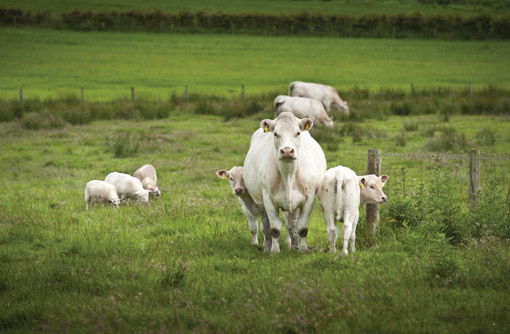Team cattle and sheep for better grazing

Grazing cattle and sheep together on upland areas can increase plant biodiversity and boost performance.
Mariecia Fraser, from The Institute of Biological, Environmental and Rural Sciences (IBERS) said selective grazing influenced plant competition, and when minor species were grazed too heavily it could reduce their competitiveness.
Speaking last week at the British Grassland Conference, Malvern, Dr Fraser said cattle were less selective when it came to grazing and would eat low digestible grasses often avoided by sheep, therefore increasing plant biodiversity.
“They are larger and have a bigger mouth, so they are looking for quantity, not necessarily quality.”
She said studies had proven it would also benefit lamb growth rates and reduce parasite burden, adding: “It’s a win-win situation.”
She said: “Cattle will eat the stuff the sheep leave behind, which improves the quality of the sward.”
Contrary to widespread belief, she said it didn’t matter what breed of cow was used for conservation grazing. A study looking at the effect of breed type on the use of Molina grass, found continental breeds used grass just as well as traditional breeds such as Belted Galloway and Welsh Black.
However, she warned continental cattle wouldn’t cope as well as traditional breeds in difficult weather.
Sheep can also use grasses in different ways, with a comparison of Scottish Blackfaces and Welsh Mountain breeds revealing Blackfaces ate more heather than Welsh Mountain sheep.
“Cattle will eat the stuff the sheep leave behind, which improves the quality of the sward.”
Mariecia Fraser, The Institute of Biological, Environmental and Rural Sciences
Botanical diversity
In recent years she said large parts of upland areas had seen a reduction in heather because of selective grazing.
But she warned action taken by the government to reduce stocking rates on upland areas in an attempt to increase botanical diversity had only aggravated the problem further, resulting in a growth of invasive species such as molina and nardus, which had choked up heather.
She said grazing cattle on hills would help to reinvigorate heather growth, because they’re not as fussy eaters and are more willing to graze species such as molina and nardus.
Benefits for upland cattle
Dr Fraser said beef producers could even see a benefit from grazing cattle on rough pastures, particularly in the summer months when grass is at its most nutritious.
Research looking into rough grazing suckler cows with calves at foot during the summer months found calves achieved growth rates of 1kg a day.
“It was less than calves on permanent pasture but not by much.”
She said it could be particularly beneficial this year when farmers are running short of forage stocks, because it means permanent pastures could be preserved for silage and/or left to graze in the winter months when grass quality of uplands drops off.
However, much more needs to be done looking at different breeds and their relationship with grass preference, she said.
“Given the importance of sheep production in the UK and the range of breeds out there, more research is needed so farmers can match different breeds to grasses to maximise performance and improve biodiversity.”
